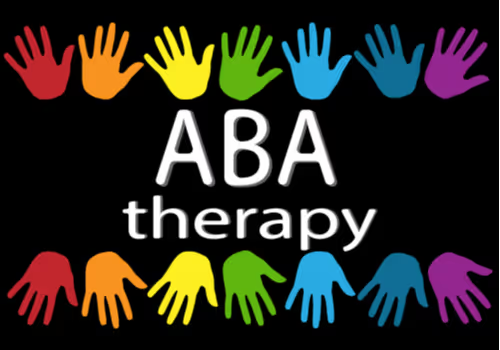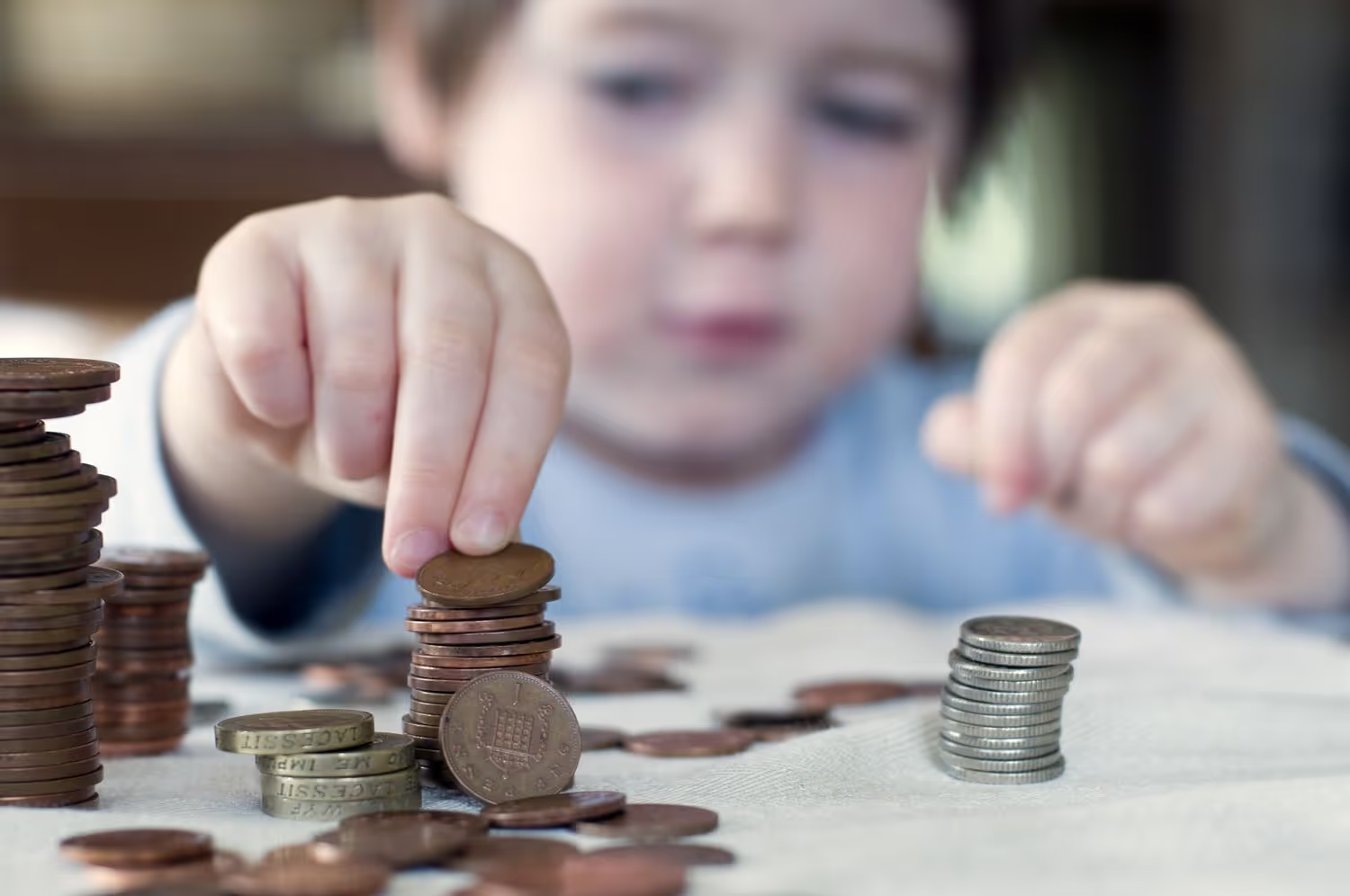Four Functions of Behavior in ABA Therapy
The four functions of behavior in ABA are Escape, Attention, Tangible Items, and Sensory Stimulation.

What Are the Four Functions of Behavior in ABA?
The four functions of behavior in ABA are Escape, Attention, Tangible Items, and Sensory Stimulation.

1. Escape
When a child acts in a particular way, it's usually to get themselves out of taking part in some activity that they dislike. Parents often set up chores for their children to take part in, or even assign random chores that are simple but bothersome to the child.
It could be something as mundane as cleaning their room. But in the mind of a child, doing this could cause interference with something fun that they were already doing, or simply take up too much of their perceived time to complete. It doesn't always have to be chores.
Things like homework, school assignments, or turning off a movie can all result in the child attempting to escape what they're being told to do. Some kids get very anxious while out in social settings.
In this scenario, they may hide away somewhere to avoid making eye contact with their peers and nearby teachers watching them.
While in the classroom, they may put their head down on the desk and pretend to be asleep when the teacher tells them to take out their work to begin a classroom assignment.
Here are some of the behaviors that are shown when children are self-motivated to get away from a setting through escape:
- They do it to avoid feeling physically agitated
- They do it to get out of social interactions and suppress social anxieties
- The child may simply run away anywhere they perceive as safe
- They avoid any areas where people gather, especially their peers
- Hiding away in a space they cannot be seen
2. Attention
Some people will behave in a peculiar way to pull attention towards them. They may seek out this attention from teachers, parents, or other people that are in their presence.
These are attention-seeking actions and can be fine in some instances, but an issue in others. It's all predicated on the situation at hand. Some attention-seeking behavior might be fine in one moment but morph into a problem through the repetition of certain behaviors.
A kid could shout or speak louder than the people in their line of sight, drawing attention from their mom, dad, or teachers. They can also make a complaint or scream out loud to bring everyone's eyes to what they're doing, even in a quiet classroom.
Adults sometimes engage in attention-seeking behavior as well, but children are more likely to exhibit it in ways that are far from positive. Here are some of the instances where kids push themselves to gain attention through negative behavior:
- Raising their voices other others
- Crying and whining through the noise
- General loudness in speech
- Waving hands in the air, or keeping their arm in a raised position
3. Tangible Items
People may act in a manner that is an issue to other people so they can receive something they like, or take part in some activity they enjoy doing. Some of the actions used to acquire tangible items could be either negative or positive.
A child, for instance, could scream to the top of their lungs just to get a small toy or see something they show an interest in, such as a show on TV.
Here are some behaviors that people rely on to get tangible items:
- Ordering food without permission, or putting themselves in the beginning stages of preparing food
- Having a controlled tantrum for toys, snacks, or candy
- Taking an object they want from a stop, or from someone that comes nearby to them.
- The purchase of a specific item
4. Sensory Stimulation
The most accurate description of sensory stimulation is when a kid does things that give them pleasure. When children will wrap their fingers in their hair for pleasure. Some may put their thumbs in their mouth. Others pick at their nails, and skin, or tap their fingers on the wall.
These instances often happen when a child is in a setting that they find mundane. The disinterest can lead them into actions that provide some level of interest for a temporary period. Other similar activities can involve cracking knuckles, combing hair at inappropriate times, knocking on tables, and scratching objects on another surface to provide a certain noise.
Below are some behaviors that are related to showing sensory stimulation:
- Picking at body features
- Popping knuckles loudly in a repetitive fashion
- Playing with head hair
- Breathing in a deep, audible manner
In some instances, when the behavior is shown, it might not be seen by parents, teachers, or caretakers. Parents oftentimes make the mistake of assuming that behavior is done for one reason only, while it's shown to reach an objective that's inconspicuous.
It's very possible and could be the case for some kids, yet other children may find such acts like popping and twisting their hair to be rewarding in their way.
Examples of Functions of Behavior
Example of Escape
A girl throws a tantrum whenever her teacher asks her to participate by answering a question like the rest of the class. The teacher also asks the girl to clean up her cubby at the end of the day, to which she again throws a tantrum. This continues until the teacher chooses to help her clean the cubby, and refrains from calling on her to participate in the class.
Example of Attention
A girl screams whenever there's an issue that her mother gets her out of. When she screams, her mom comes to her and asks what the matter is. When she acts in this way, it gives her the attention that she wants.
Example of Tangible Items
A boy wants to hang out with his friend. When they're both in his room together, the friend is struck by the boy when he pulls out a toy he wanted to show off, to which he cries. Because of the hit, the boy now possesses the toy brought over by his friend, at least until his parents find out what occurred.
Example of Sensory Stimulation
A teen covers his ears when his classmates around him begin talking. It gives him sensory stimulation since the noise level is immediately reduced.
How Are the Four Functions Used in ABA Therapy?
Therapists in an ABA center will pinpoint the functionality of problematic behaviors that are shown by children. Knowing the reason that kids behave poorly can assist therapists when they look for solutions to help them while showing the fewest instances of unwanted behavior. From that point forward, an intervention is planned to mitigate it as much as possible.
What Are the Core Functions of Behavior?
The core functions of behavior are an escape, access to attention, access to tangibles, and sensory stimulation.
While many factors motivate behaviors to occur, two of the primary functions out of the four are access and escape. They both make behavior more in line to occur in a future period.
Access Vs. Escape
When delving further into the nature of the primary functions, one can find out more to understand whether the reinforcer is given directly or is socially given by another person.
Understanding how someone accesses the reinforcer can help in finding out the most effective way to change the behavior for the better.
Accurately identifying functions helps in making informed choices that can change poor behaviors. Knowing why a behavior takes place can also end in a change that has meaning. One can rely on such info to switch the conditions that surround the behavior as well.
Access to Tangibles
A tangible is something that can be touched or felt, as indicated by the single word in its definition. It can also be something from an action figure or even a small snack or another object that someone doesn't find to be very interesting.
Children that are young and have autism sometimes develop interests that can only be described as intense, things might seemingly be random. Although anything can fit this description, flags, straws, and pipes are some common examples.
Access to Activities
Some kids become motivated by things they find to be fun. Here are some typical things that a child might find to be very enjoyable:
- Being tickled
- Blowing bubbles
- Television, especially when a show is on that they like
- Music, particularly tracks of music they know and love
Access to such activities can reinforce particular behaviors. Then other activities can do the same but with parents being completely unaware of what they are.
Access to Sensory Stimulation
Access to sensory stimulation is referencing a stimulation of senses that can become stimulating on their own.
This sort of behavior works to help an internal child's sensation, thereby helping to get rid of another internal sensation that might be discomforting.
One of the easiest examples of access to sensory stimulation is scratching.
Children could scratch at their skin from having bug bites or being sunburnt to numb away the itching feeling that the bug leaves behind. Of course, sensory stimulation can vary based on the personalities and differences found in every child.
Some children may like the feeling of sensory stimulation from a sports game, for instance, while another kid could rock in a continuous motion to get rid of stimulation from another sense. In this way, sensory stimulation can be thought of as both a mechanism for coping and relaxing.
Access to Attention
Access to attention occurs when someone behaves in a way that helps bring attention to them from someone close, typically the parents, siblings, teachers, and peers of others.
One example of access to attention is when a child begins whining until their parent gives them the attention they want.
The child then learns that whining will produce the desired results that they were aiming for and may continue in that behavior to end in their desired outcome.
Another example is a therapist having a conversation with someone else, like an adult, parent, or co-worker.
A nearby child hurls an item across the other side of the room. The therapist notices the child and tells them that they must clean up the toy.
Alternatively, the therapist could begin having an interaction with the child-like before. As a result, the child believes that throwing the toy will give them the attention they wanted from the therapist.
Escape From A Lengthy Task
Escaping from lengthy tasks takes place when children believe that one is taking too long, or is aversive to their time.
What's defined as a long time can be different for every child, however. Some children may believe that sitting down at a table for less than ten minutes is a long time.
Even five minutes might be too long for some to stay in one spot. Still, another child may think that sitting still for just 35 seconds is unpleasant. These are also known as being aversive.
The aversive result of a task is characteristic of each individual's perspective. Although some might feel that could take a time length they're unable to wait around for.
Escape from a Difficult Task
With certain kids, time isn't as big of an issue as how hard the task they're expected to finish will turn into. This is predicated on every child's perception of certain tasks, of course.
It has nothing to do with how easy or hard someone close to them might think it is, such as a child's parents or siblings.
Escape from Sensory Stimulation
When kids sometimes look for experiences relating to the senses, they might find certain sensations to be highly aversive to their liking.
Things like noises that are abrupt and come unexpected, strobe lights flashing, being touched lightly, and very strong aromas could be loved by one child and hated by the next.
A smell or an audible noise that someone finds pleasant could result in triggering an unexpected reaction that takes those around the child off guard.
Escape from Attention
Social interactions and attention can help with the reinforcement of numerous behaviors, although for children, these are most often aversive happenings.
Some kids possess very powerful emotional reactions whenever an older person reprimands them or showers them with lots of praise.
Some may also engage in behaviors meant to help lower their social interaction with other people. Socializing can be unpleasant, especially for young people on the spectrum.
Direct Access Vs. Socially Mediated Access
On many occasions, people have been able to access reinforcers with no assistance from others that are around. A kid that takes an action figure or doll from someone else their age will have access to something new in a very direct manner.
Another child that runs toward a playground tire swing and begins playing with it also has direct access. Spinning in circles can also provide young people with an experience of the senses.
Direct access might be simple for some to figure out but could prove hard to prevent altogether. Children that have problems eating too much yet know how to get access to the food they like in the pantry to have direct access to food. That is unless their parents figure out a plan to restrict entry or teach them another approach.
Access that's socially mediated can take lengthy speculation to understand. It can allow access to reinforcers by way of someone else. When that access is intentionally given or on its own, another person is needed for the individual to have access to sensory and tangible experience. The same applies to attention.
People won't reinforce problematic behavior by allowing them access to a reinforcer. The person that gives access isn't always attentive to the consequences that could take place. Benefits for someone might be higher than the risk perceived for allowing entry.
Function and Reinforcement
Behavior can also be learned through function and reinforcement. On their own, behaviors have two purposes. It's a try at getting something or an effort to move away from another thing.
When a behavior helps at getting something for a young person, It's popularly known as positive reinforcement.
However, the contrast can also be true. If one's behavior helps in getting a child away from an object or setting, negative reinforcement is at play.
Understanding Positive and Negative Reinforcement
Both positive and negative reinforcement can be better taken in as reinforcements that are automated.
Positive social reinforcement can occur when behavior allows a child something by the doings of someone else.
A child, for example, could ask their father for something to drink. Action by the dad is necessary for positive reinforcement of the refreshment.
Automatic positive reinforcement can occur with no need for anyone else around. A child could get something they wish for by their initiative. This takes place when a child pours their favorite soda into a cup by themselves and without any help.
Social and automatic negative reinforcements are the opposites.
Social negative reinforcement aims to make someone get away from another object or thing, possibly through someone else's actions.
This can be found when a child asks for their sibling to remove vegetables from their eating tray.
Automatic negative reinforcement is to have something go away from a child by way of their initiative. The same child pushing the vegetables off their tray when they don't want them is a simple example.
Recent News
Related articles

Working With Autistic Children: 10 Career Options
Want to work with autistic children? Here are 10 career options for you to consider.

What Is The Age Limit For ABA Therapy In Indiana?
Find out what the age limit is for receiving Applied Behavior Analysis (ABA) therapy in Indiana.

What Is The Age Limit For ABA Therapy In Arizona?
Find out what the age limit is for receiving Applied Behavior Analysis (ABA) therapy in Arizona.

Verbal Operants In ABA: Definition & Examples
In Applied Behavior Analysis, verbal operants are a type of verbal behavior.

Token Economy: Examples & Applications in ABA
A token economy is a procedure that was developed to help reduce maladaptive behaviors and increased desire behaviors by providing a tangible conditioned reinforcer.

Trigger Analysis In ABA: Definition & Examples
Trigger analysis is a segment of ABA therapy where children are taught by therapists to pinpoint the behaviors and emotions that happen before, during, and after an event that takes place.

Variable Ratio Schedule & Examples
A variable-ratio schedule is a random reinforcement where responses are reinforced following varied responses afterward.

Task Analysis In ABA Therapy: Examples & Strategies
Task analysis is a process of teaching that divides complicated activities into sections involving easier steps for students to more easily take.

Stimulus Equivalence In ABA: Definition & Examples
Stimulus equivalence shows how relationships can manifest among different types of stimuli in different situations.

Speech Therapy For Autism: ABA vs. Speech Therapy
ABA therapy can help individuals with speech impairments learn to better identify and utilize the language skills they already have.

Stimulus Control Transfer ABA: Definition & Examples
Stimulus control is defined as an expression used to detail circumstances where a behavior is triggered by the existence or absence of a stimulus.

Social Validity In ABA: Definition & Examples
Social validity is the acceptance of interventions concerning behavioral changes.

